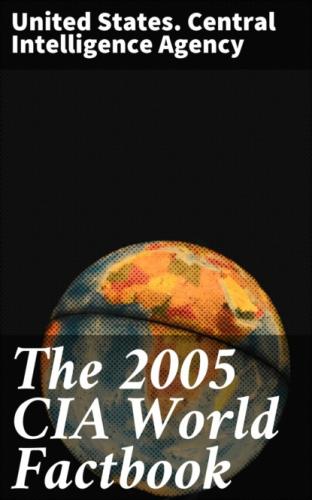Chinese General Chamber of Commerce (pro-China); Chinese
Manufacturers' Association of Hong Kong; Confederation of Trade
Unions or CTU (pro-democracy) [LAU Chin-shek, president; LEE
Cheuk-yan, general secretary]; Federation of Hong Kong Industries;
Federation of Trade Unions or FTU (pro-China) [CHENG Yiu-tong,
executive councilor]; Hong Kong Alliance in Support of the Patriotic
Democratic Movement in China [Szeto WAH, chairman]; Hong Kong and
Kowloon Trade Union Council (pro-Taiwan); Hong Kong General Chamber
of Commerce; Hong Kong Professional Teachers' Union [CHEUNG
Man-kwong, president]; Neighborhood and Workers' Service Center or
NWSC (pro-democracy); The Alliance [Bernard CHAN, exco member]
International organization participation: APEC, AsDB, BIS, ICC, ICFTU, IHO, IMF, IMO (associate), Interpol (subbureau), IOC, ISO (correspondent), UPU, WCL, WCO, WMO, WToO (associate), WTO
Diplomatic representation in the US: none (special administrative region of China)
Diplomatic representation from the US: chief of mission: Consul General James B. CUNNINGHAM consulate(s) general: 26 Garden Road, Hong Kong mailing address: PSC 461, Box 1, FPO AP 96521–0006 telephone: [852] 2523–9011 FAX: [852] 2524–0860
Flag description: red with a stylized, white, five-petal bauhinia flower in the center
Economy Hong Kong
Economy - overview:
Hong Kong has a free market, entrepot economy, highly dependent on
international trade. Natural resources are limited, and food and raw
materials must be imported. Gross imports and exports (i.e.,
including reexports to and from third countries) each exceed GDP in
dollar value. Even before Hong Kong reverted to Chinese
administration on 1 July 1997, it had extensive trade and investment
ties with China. Hong Kong has been further integrating its economy
with China because China's growing openness to the world economy has
made manufacturing in China much more cost effective. Hong Kong's
reexport business to and from China is a major driver of growth. Per
capita GDP is comparable to that of the four big economies of
Western Europe. GDP growth averaged a strong 5% from 1989 to 1997,
but Hong Kong suffered two recessions in the past six years because
of the Asian financial crisis in 1998 and the global downturn in
2001 and 2002. Although the Severe Acute Respiratory Syndrome (SARS)
outbreak also battered Hong Kong's economy, a boom in tourism from
the mainland because of China's easing of travel restrictions, a
return of consumer confidence, and a solid rise in exports resulted
in the resumption of strong growth in late 2003 and in 2004.
GDP (purchasing power parity):
$234.5 billion (2004 est.)
GDP - real growth rate:
7.9% (2004 est.)
GDP - per capita:
purchasing power parity - $34,200 (2004 est.)
GDP - composition by sector: agriculture: 0.1% industry: 11.3% services: 88.6% (2004 est.)
Labor force:
3.54 million (October 2004 est.)
Labor force - by occupation:
manufacturing 7.5%, construction 2.9%, wholesale and retail trade,
restaurants, and hotels 43.7%, financing, insurance, and real estate
19.2%, transport and communications 7.9%, community and social
services 18.5%
note: above data exclude public sector (2004 est.)
Unemployment rate:
6.7% (2004 est.)
Population below poverty line:
NA
Household income or consumption by percentage share:
lowest 10%: NA
highest 10%: NA
Inflation rate (consumer prices):
−0.3% (2004 est.)
Investment (gross fixed):
22.7% of GDP (2004 est.)
Budget:
revenues: $26.6 billion
expenditures: $31.7 billion, including capital expenditures of $5.9
billion (2004 est.)
Public debt:
2.1% of GDP (2004 est.)
Agriculture - products:
fresh vegetables, poultry, fish, pork
Industries:
textiles, clothing, tourism, banking, shipping, electronics,
plastics, toys, watches, clocks
Industrial production growth rate:
1% (2004 est.)
Electricity - production:
35.51 billion kWh (2003)
Electricity - production by source: fossil fuel: 100% hydro: 0% nuclear: 0% other: 0% (2001)
Electricity - consumption:
38.45 billion kWh (2003)
Electricity - exports:
3 billion kWh (2003)
Electricity - imports:
10.4 billion kWh (2003)
Oil - production:
0 bbl/day (2003 est.)
Oil - consumption:
257,000 bbl/day (2001 est.)
Oil - exports:
NA
Oil - imports:
NA
Natural gas - production:
NA
Natural gas - consumption:
680.9 million cu m (2001 est.)
Natural gas - exports:
0 cu m (2001 est.)
Natural gas - imports:
680.9 million cu m (2001 est.)
Current account balance:
$14.85 billion (2004 est.)
Exports:
$268.1 billion f.o.b., including reexports (2004 est.)
Exports - commodities:
electrical machinery and appliances, textiles, apparel, footwear,
watches and clocks, toys, plastics, precious stones, printed material
Exports - partners:
China 44%, US 17%, Japan 5.3% (2004)
Imports:
$275.9 billion (2004 est.)
Imports - commodities:
raw materials and semi-manufactures, consumer goods, capital goods,
